Two black barred bands are worn across a spectacular myriad of pastel reds, oranges, and yellows!
Meet the Dusky Lory
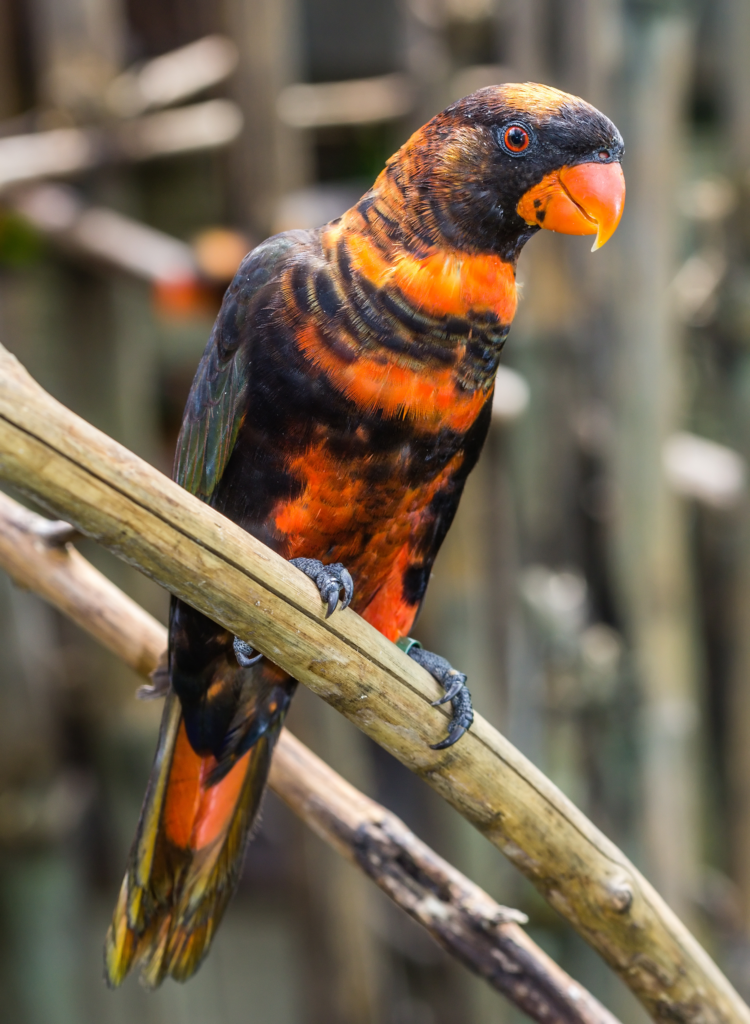
Photo Courtesy of Crisco 1492 / CC BY-SA 4.0
The dusky lory (Pseudeos fuscata) is a short-tailed parrot measuring 25 cm (10 inches) in length, and weighing in at 10.5 oz (300 grams). Dusky Lorys are birds that have two spectacular color phases, one being yellow and the other orange. The orange-phase bird wears a mainly dark brown head and face, topped off by a bronze crown with a patch of bare, orange skin around the sides of the lower bill. They wear a bright orange collar on the upper breast, and a white rump. Below the collar is a black barred band bordered by another orange band, with a mixture of brown and orange plumage on the abdomen. The plumage under the wings is orange while the tail is dark blue.
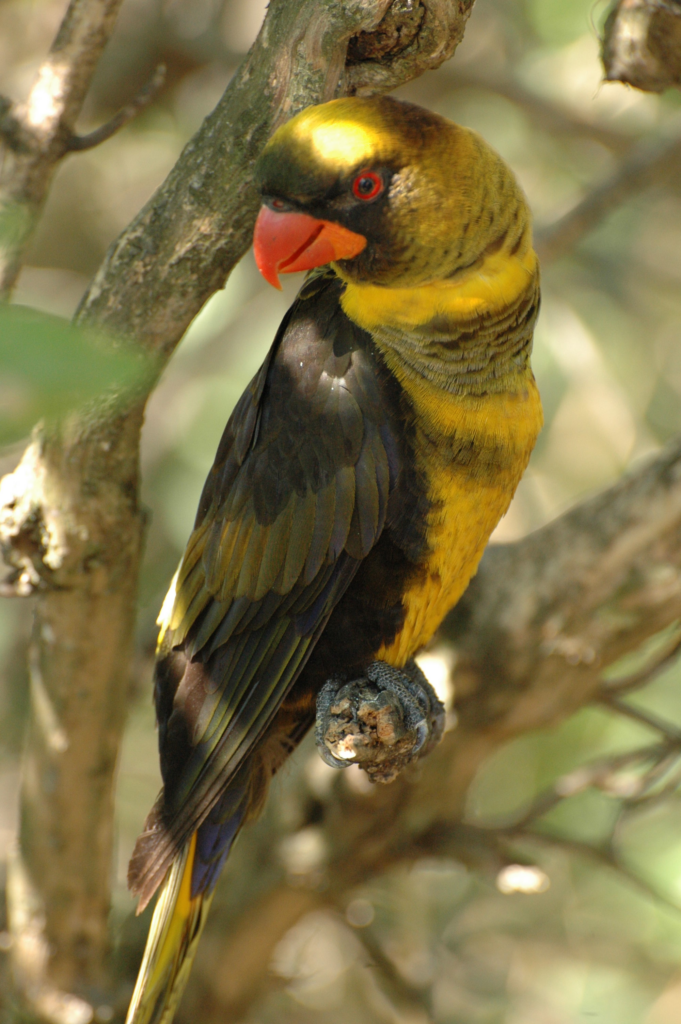
Photo Courtesy of Maureen / CC BY 2.0
The yellow-phase bird is less common than the orange-phase bird with all the orange markings replaced with yellow.
Male and female birds look alike, usually requiring a DNA test to determine gender. Juvenile birds tend to be duller than adult birds with a yellow back and rump.
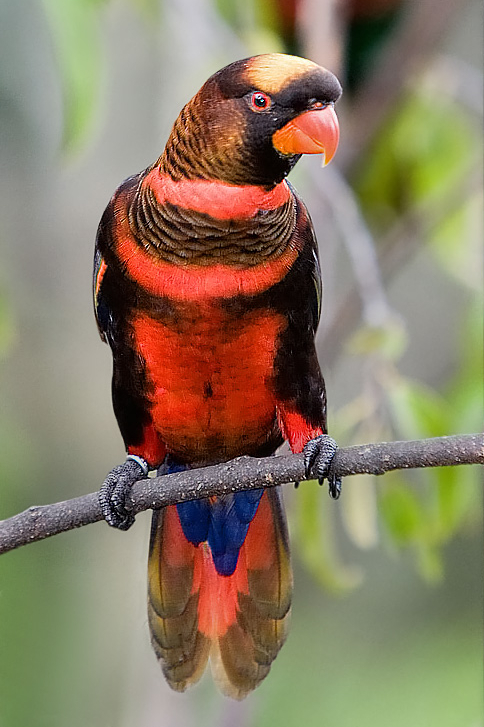
Photo Courtesy of Doug Janson / CC BY-SA 3.0
These birds can be found in Papua New Guinea and the offshore islands of Batanta, Salawati, and Yapen.

Photo Courtesy of kathy blohm / CC BY 2.0
These birds like to inhabit subtropical or tropical moist lowland forests or montane forests as well as subtropical or tropical mangrove forests below 2500m.
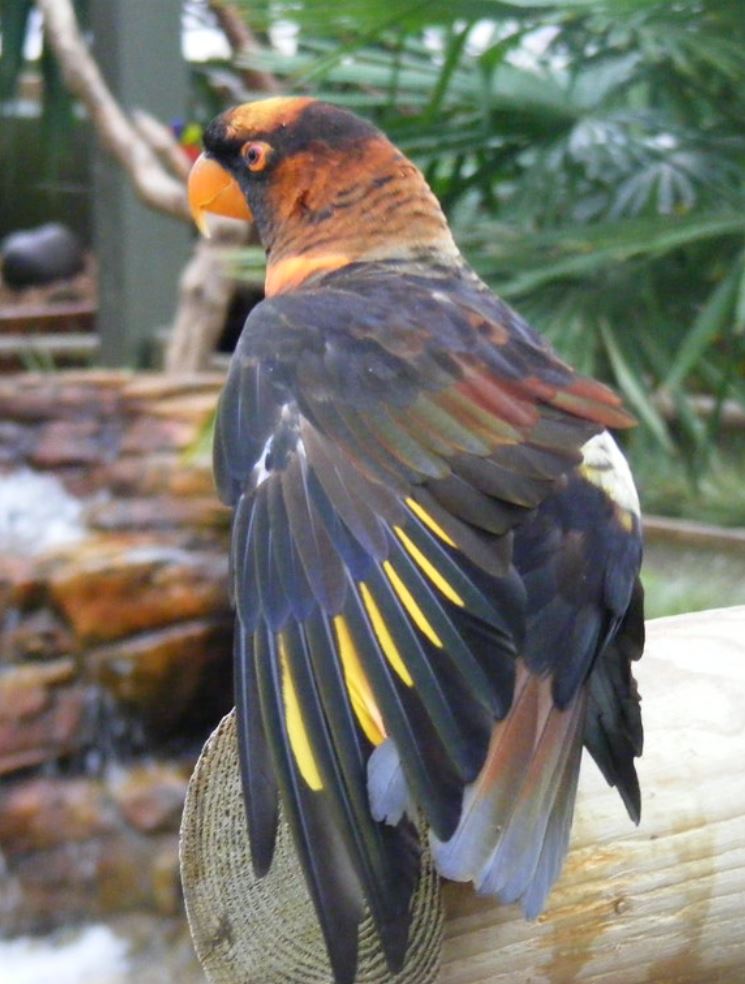
Photo Courtesy of Marie Hale / CC BY 2.0
Unlike most other parrots who like to dine on nuts and seeds, Dusky Lory likes to eat a lot of fruit, buds, nectar, and pollen. In the wild can feed on 640 flowers in a single day.
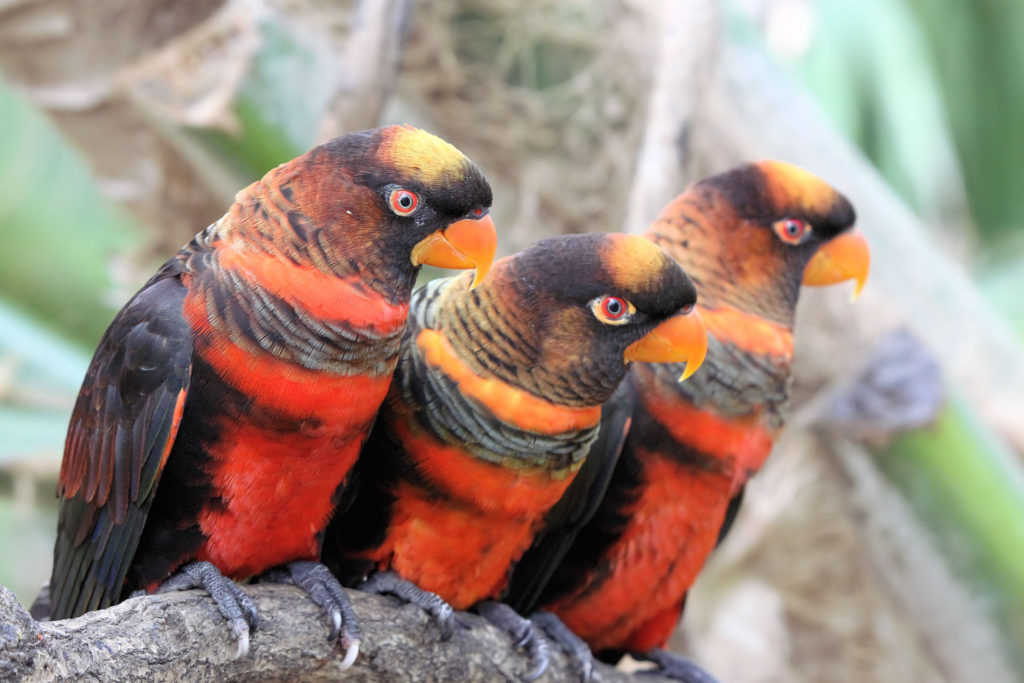
Photo Courtesy of Tim Felce (Airwolfhound) / CC BY-SA 2.0
For Dusky Lory the breeding season begins depending on the region they live in, often starting in November and extending through to April in mountainous areas. These birds nest in hollows of tall montane trees when males and females work together to perfect their nesting hollow. The female lays up to two eggs, incubating for around 24 days. Once they have hatched the chicks become fledged after 70 days.
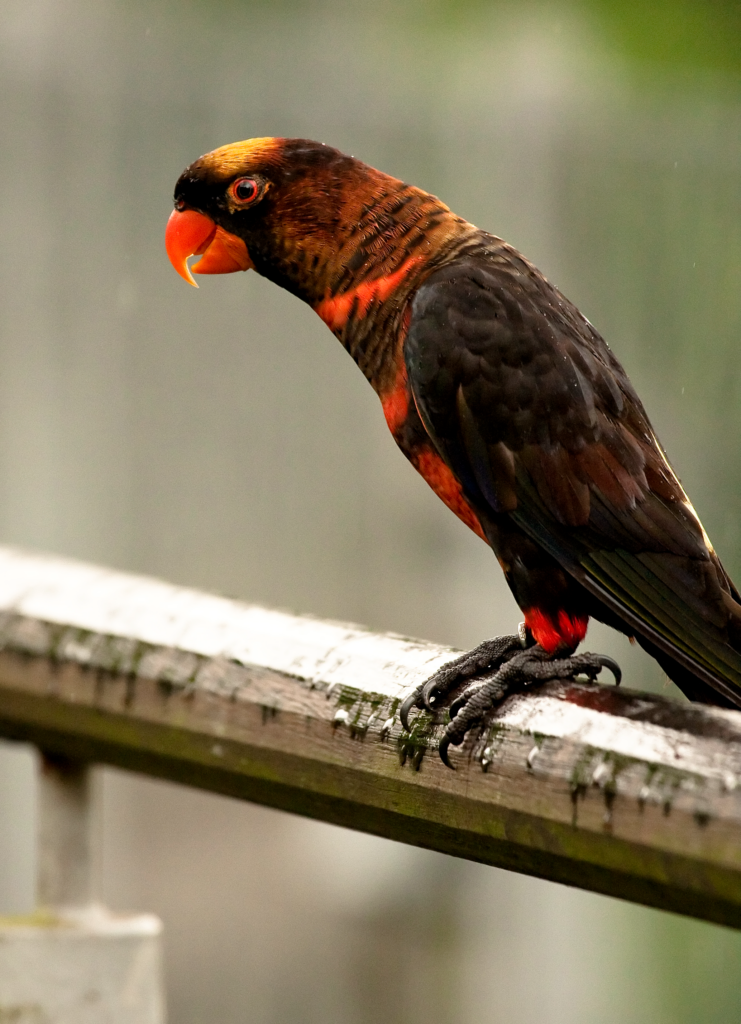
Photo Courtesy of Peter Tan / CC BY-SA 2.0
On the Red List of Threatened Species, the Dusky lory is considered as of “least concern”.
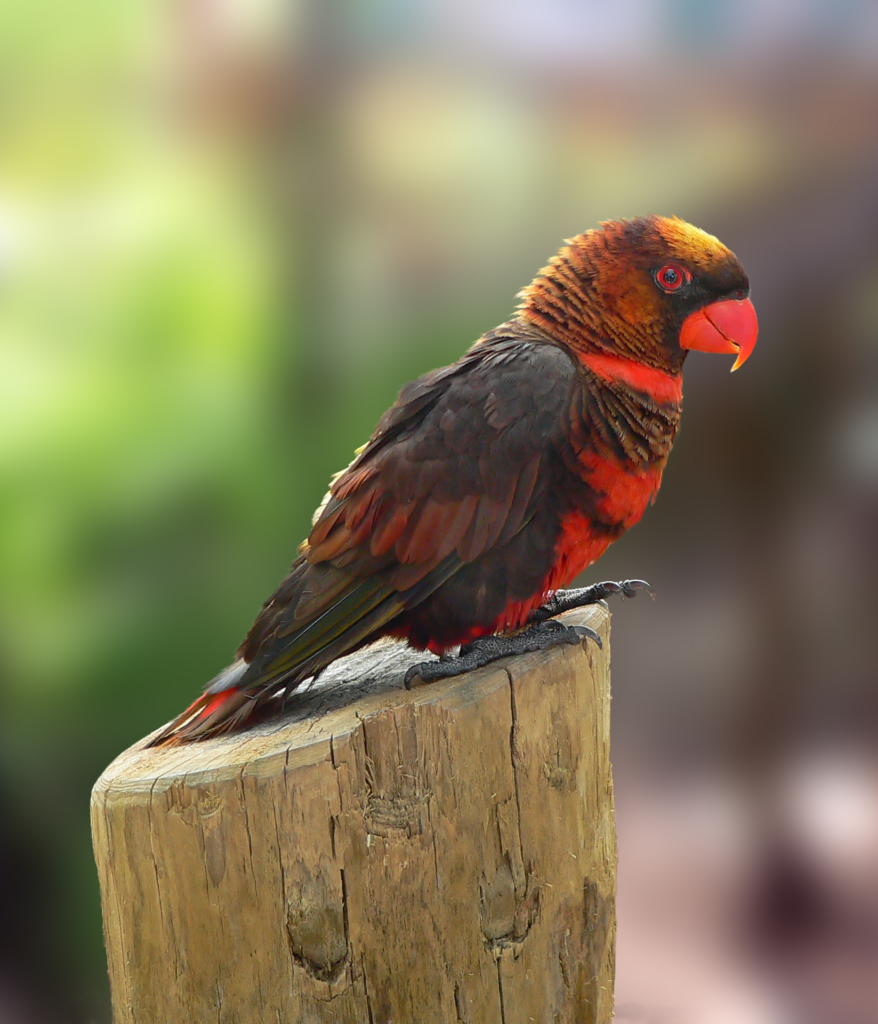
Photo Courtesy of Greg Hume / CC BY-SA 3.0
You can watch this bird right here in the video below:




